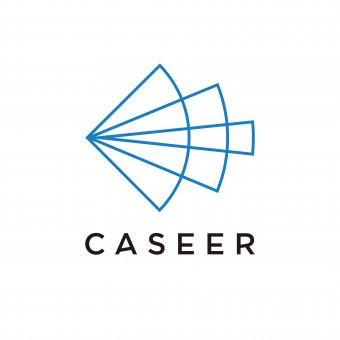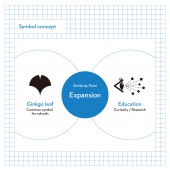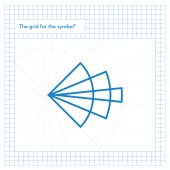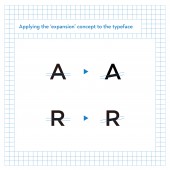
| THE AWARD |
| CATEGORIES |
| REGISTRATION |
| SUBMIT YOUR WORK |
| ENTRY INSTRUCTIONS |
| TERMS & CONDITIONS |
| PUBLICATIONS |
| DATES & FEES |
| METHODOLOGY |
| CONTACT |
| WINNERS |
| PRESS ROOM |
| GET INVOLVED |
| DESIGN PRIZE |
| DESIGN STORE |
| THE AWARD | JURY | CATEGORIES | REGISTRATION | PRESS | WINNERS | PUBLICATIONS | ENTRY INSTRUCTIONS |
Institution Logo by Masayuki Izumi |
Home > Winners > Design #88737 >Interview |
 |
|
FS: What is the main principle, idea and inspiration behind your design?
MI: The main principle for me is to advance the project with the clients. It is important that the design will be perceived as the clients intended, and memorable for the right reasons.
FS: What has been your main focus in designing this work? Especially what did you want to achieve?
MI: I focused on developing a design that can be perceived and understood not only about the activities for promotion of further development of school education and empirical investigations of educational effects of the institution but also about belonging to the University of Tokyo.
FS: What are your future plans for this award winning design?
MI: I have no future plans.
FS: How long did it take you to design this particular concept?
MI: It took about a month to produce the design.
FS: Why did you design this particular concept? Was this design commissioned or did you decide to pursuit an inspiration?
MI: The client's request was for a design that would be perceived and understood not only about the activities of the institution but also about belonging to the University of Tokyo, therefore, I interviewed the client and I advanced the project from concept to design.
FS: Is your design being produced or used by another company, or do you plan to sell or lease the production rights or do you intent to produce your work yourself?
MI: No. The copyright of the design is transferred to the client.
FS: What made you design this particular type of work?
MI: I designed a logo that enabled the general public to perceive and understand the activities of institution for promotion of further development of school education and empirical investigations of educational effects.
FS: Where there any other designs and/or designers that helped the influence the design of your work?
MI: I refer to the design of measuring instruments such as rulers and protractors.
FS: Who is the target customer for his design?
MI: There is no specific user.
FS: What sets this design apart from other similar or resembling concepts?
MI: The design is distinct from other designs in that it aligns with the logo and tone of the University of Tokyo.
FS: How did you come up with the name for this design? What does it mean?
MI: The name was given to the client. It is an acronym for the Center for Advanced School Education and Evidence-Based Research.
FS: Which design tools did you use when you were working on this project?
MI: I used Adobe Illustrator.
FS: What is the most unique aspect of your design?
MI: I found the general concept from "expansion" of understanding, viewpoint, and curiosity obtained from education and research and from concept of "expansion" like a fan-shaped ginkgo leaf, which is a symbol common to the University of Tokyo. I was able to introduce a familiar symbol such as a protractor that measures " expansion" by making the activity of examining effects look like familiar tools called "protractor" and act of "measuring".
FS: Who did you collaborate with for this design? Did you work with people with technical / specialized skills?
MI: No other members participate in the production. However, I always listened to the opinions of the client.
FS: What is the role of technology in this particular design?
MI: All elements are involved.
FS: Is your design influenced by data or analytical research in any way? What kind of research did you conduct for making this design?
MI: Yes. I researched the shape, purpose and measuring method of measuring tools, which is the underlying concept.
FS: What are some of the challenges you faced during the design/realization of your concept?
MI: To illustrate the concept of verifying the effects of the sophistication of education accessible to the public, I researched whether I could draw an analogy with something familiar.
FS: How did you decide to submit your design to an international design competition?
MI: I received an email from the secretariat of the A'Design Award, proposing to nominate this design, so I applied, and I am looking forward to seeing how it will be evaluated.
FS: What did you learn or how did you improve yourself during the designing of this work?
MI: I interviewed clients in person and in writing, I noted their reactions both immediately and after consideration. I learned to value the opinions and thoughts of the clients at different times.
FS: Any other things you would like to cover that have not been covered in these questions?
MI: No, there are no specific items not covered.
FS: Thank you for providing us with this opportunity to interview you.
A' Design Award and Competitions grants rights to press members and bloggers to use parts of this interview. This interview is provided as it is; DesignPRWire and A' Design Award and Competitions cannot be held responsible for the answers given by participating designers.
| SOCIAL |
| + Add to Likes / Favorites | Send to My Email | Comment | View Press-Release |





